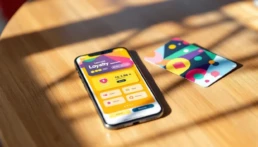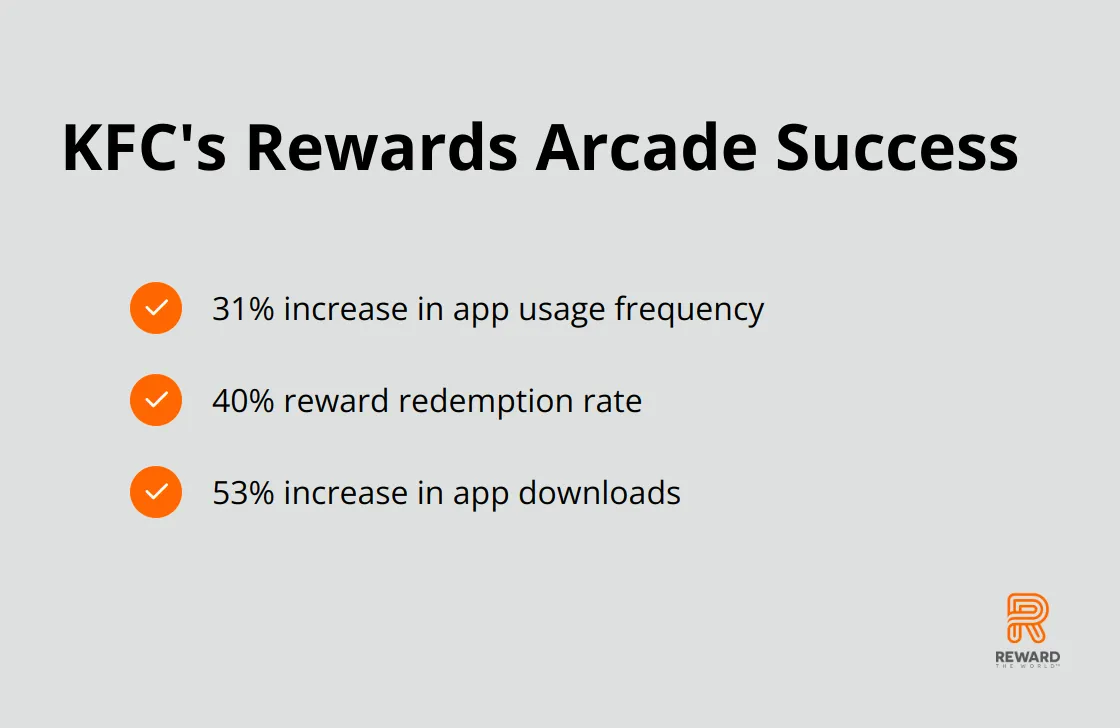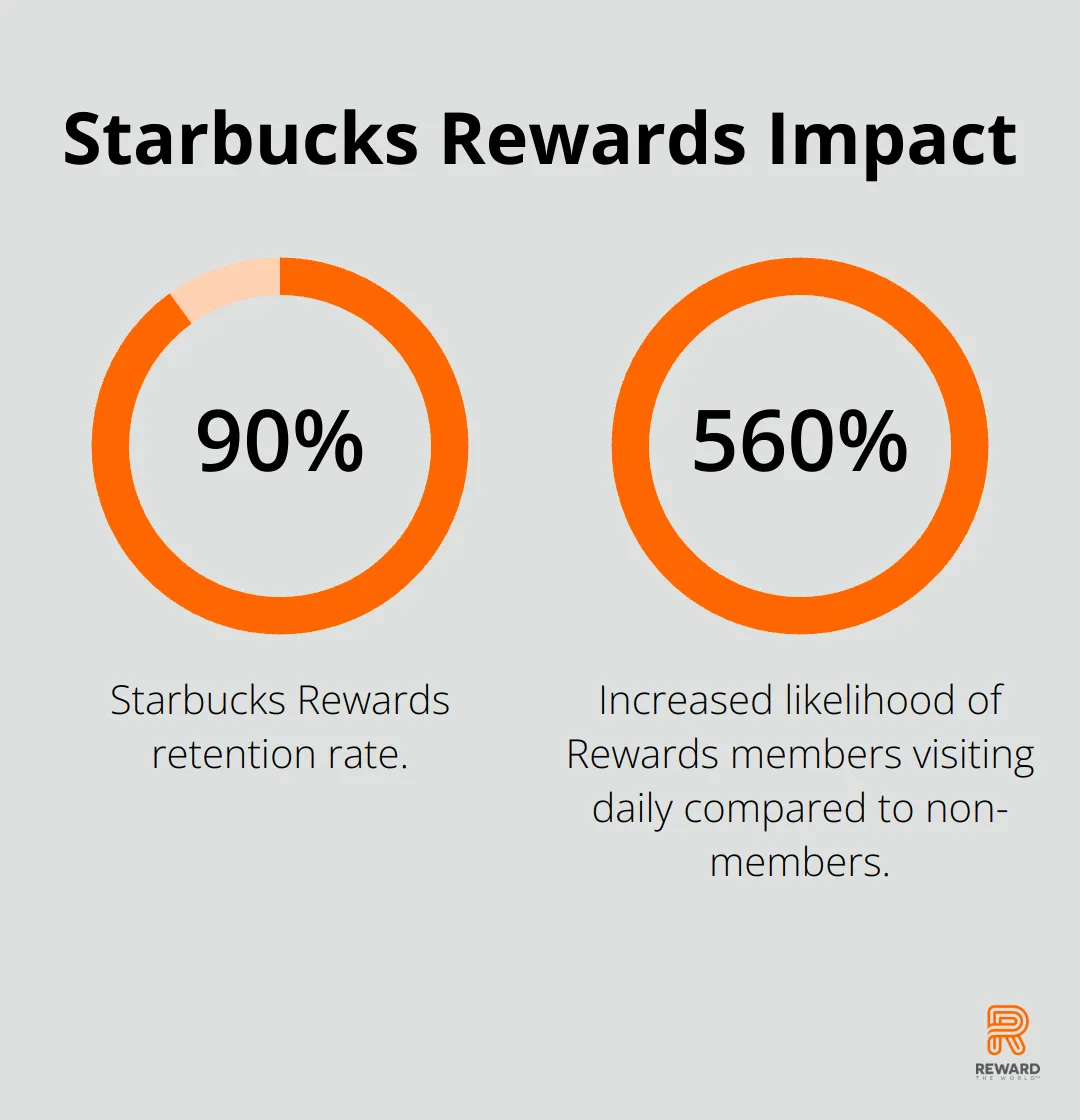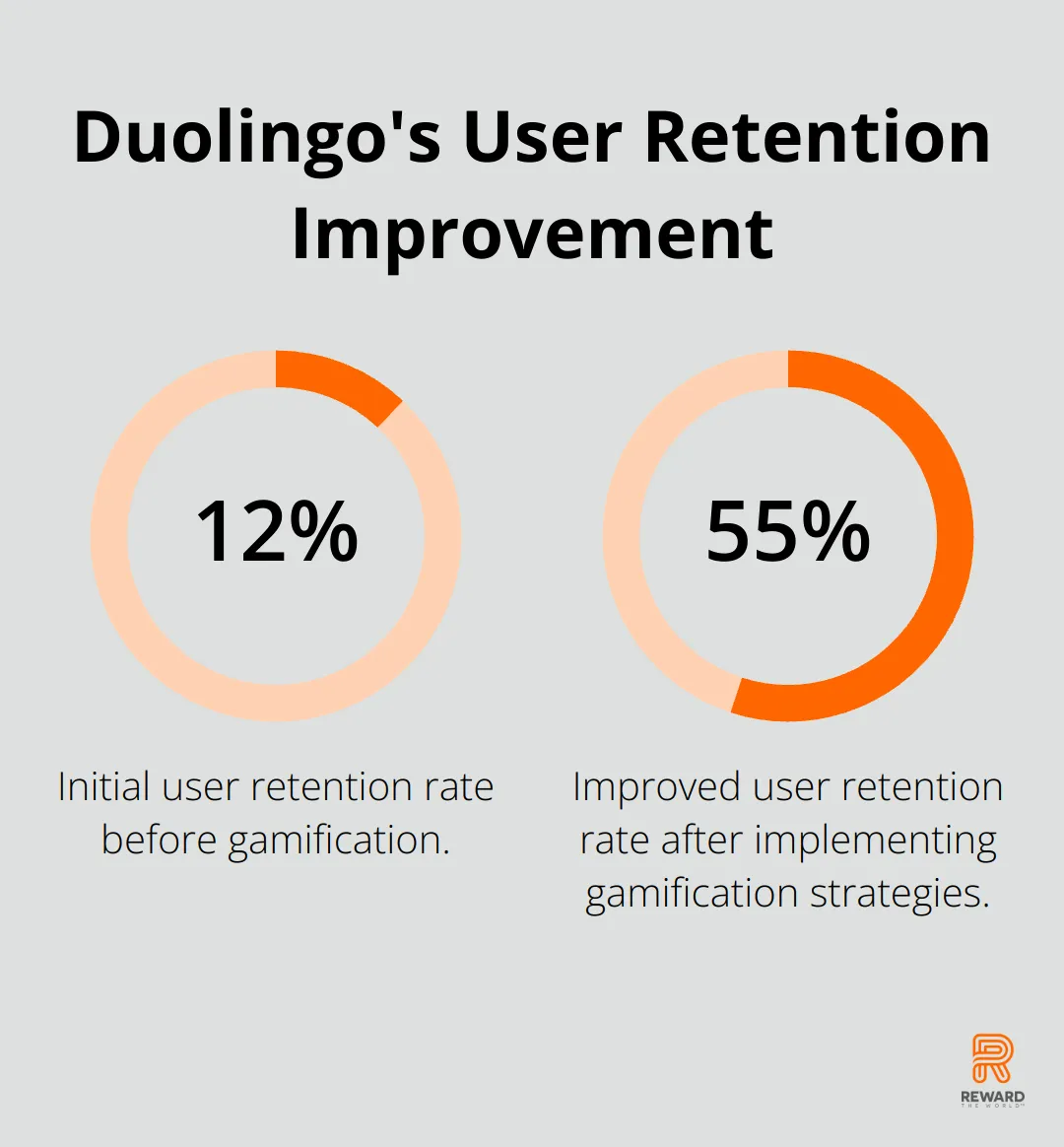
Loyalty programs are evolving, and gamification is the secret sauce. At Reward the World, we’ve seen how loyalty gamification transforms mundane point-collecting into an exciting adventure.
This blog post will show you how to create an addictive loyalty game that keeps customers coming back for more. We’ll explore proven strategies, psychological triggers, and real-world success stories to help you level up your loyalty program.
Gamification Elements That Hook Customers
Gamification transforms loyalty programs from mundane point-collecting into thrilling adventures. The right mix of elements can dramatically increase engagement and retention rates. Let’s explore the key components that make loyalty programs irresistible.
The Power of Points, Badges, and Levels
Points, badges, and levels form the foundation of gamified loyalty programs. They offer simplicity and instant gratification. But the real magic happens when you combine these elements effectively. Programs like Starbucks Rewards have shown retention rates as high as 90%, demonstrating that an appealing loyalty program can drastically reduce churn.
Challenges and Quests: Engagement Boosters
Challenges and quests provide customers with compelling reasons to interact with your brand regularly. KFC’s Rewards Arcade showcases the power of this approach. Their gamified challenges resulted in a 31% increase in app usage frequency. The program also achieved a 40% reward redemption rate and a 53% increase in app downloads. When you design challenges, strike a balance between achievability and difficulty to maximize their appeal.

Leaderboards: Fuel for Competition
Leaderboards can supercharge engagement by tapping into people’s competitive nature. However, their implementation requires careful consideration. Segmentation ensures fairness and motivation for all participants. While global leaderboards might discourage newcomers, those based on similar spending habits or join dates can inspire everyone to participate.
Progress Bars and Milestones: Visual Motivation
Visual progress indicators pack a powerful punch. LinkedIn demonstrated this by increasing profile completion rates by 55% with a simple progress bar. LinkedIn’s profile completion bar is a classic example that nudges users to add more information, improving both the user’s profile and LinkedIn’s data richness. In loyalty programs, progress bars that show the path to the next reward or level can significantly boost engagement. Interspersed milestones provide mini-celebrations that maintain customer motivation.
The key to a successful gamified loyalty program lies in balance. An overabundance of elements can overwhelm users, while too few might fail to provide sufficient engagement. A mix of 3-4 core gamification elements often yields the best results for most brands. Start with points and progress bars, then introduce challenges or leaderboards based on your audience’s preferences.
As we move forward, we’ll explore the psychological triggers that make these gamification elements so effective in creating addictive loyalty programs.
What Makes Loyalty Programs Addictive?
The Dopamine Rush of Instant Rewards
Instant gratification acts as a powerful motivator in loyalty programs. When customers receive immediate rewards for their actions, it triggers a dopamine release in their brains. This feel-good neurotransmitter creates a positive association with the brand and encourages repeat behavior.
A tiered reward system can leverage this effect. Customers earn small, instant rewards frequently (e.g., a free pastry after five purchases), alongside larger, long-term goals (such as a free bag of coffee beans after 50 purchases). This approach satisfies both short-term cravings and long-term aspirations.
Harnessing FOMO and Social Proof
Fear of Missing Out (FOMO) and social proof drive engagement in loyalty programs. When customers see others benefiting from a program, they’re more likely to participate.
Features that showcase user achievements and rewards can amplify this effect. A fitness app might display a leaderboard of top performers or highlight members who’ve reached significant milestones. This strategy not only motivates existing members but also attracts new ones.
Creating a Sense of Mastery
People love to feel progress and master a system. Loyalty programs with clear progression paths and achievable milestones give customers a sense of accomplishment and encourage them to strive for the next level.
A level-up system where customers gain new perks or status as they engage more with the brand can be highly effective. An airline loyalty program might offer priority boarding at silver level, lounge access at gold, and complimentary upgrades at platinum.
The Power of Personalization
Personalization is the key to creating a truly addictive loyalty program. Data analytics can tailor rewards and challenges to individual preferences and behaviors. This makes the program feel more relevant and valuable to each customer.
For instance, if a customer frequently purchases eco-friendly products, the program could offer them rewards or challenges related to sustainability. This targeted approach can significantly boost engagement and loyalty.
Balancing Psychological Triggers
The most effective loyalty programs strike a balance between these psychological triggers. They offer immediate gratification while also providing long-term goals, social elements, a sense of progress, and personalized experiences.
Understanding and leveraging these psychological factors can create a loyalty program that keeps customers engaged and coming back for more. In the next section, we’ll explore real-world examples of successful gamified loyalty programs that have mastered these principles.
Real-World Success Stories of Gamified Loyalty
Starbucks Rewards: A Masterclass in Engagement
Starbucks Rewards stands as the gold standard of gamified loyalty programs. With a 13.29% year-over-year growth, it proves its power in customer retention. The program’s success stems from its perfect blend of instant gratification and long-term goals.
Members earn ‘stars’ for every purchase, which they can redeem for free drinks and food items. The genius lies in the tiered system – as customers accumulate more stars, they unlock higher levels with better perks. This progression keeps users engaged and spending more.
A key feature, ‘Double Star Days’, allows members to earn twice the usual stars. This limited-time offer creates urgency, driving more frequent visits and higher spend. Starbucks Rewards members are 5.6 times more likely to visit a Starbucks every day, highlighting the program’s effectiveness.

Nike+ Run Club: Fitness as a Game
Nike’s Run Club app exemplifies how gamification transforms a routine activity into an engaging experience. With users worldwide, it proves its wide appeal.
The app gamifies running through challenges, achievements, and social features. Users earn badges for milestones (like running their fastest mile or completing a certain distance). These virtual rewards provide a sense of accomplishment and motivation to keep running.
One of the most effective features allows users to compete with friends or join global challenges. This social aspect taps into our competitive nature and creates a community feel. A study on fitness gamified apps surveyed 240 users, exploring engagement through cognitive, affective, and behavioral dimensions.
Duolingo: Addictive Language Learning
Duolingo has revolutionized language learning through gamification. Its success is evident in its user base.
The app breaks language learning into bite-sized lessons, each awarding experience points (XP) upon completion. Users set daily goals and maintain ‘streaks’ for consistent practice. This simple yet effective system leverages the psychological principle of ‘loss aversion’ – users don’t want to break their streak and lose progress.
Duolingo’s ‘leagues’ feature adds a competitive element, grouping users based on their activity levels. This social comparison motivates users to practice more to climb the ranks. Duolingo’s gamification strategy has helped increase user retention from 12% to 55%.

Reward the World: The Ultimate Gamification Platform
While these success stories demonstrate the power of gamification, Reward the World takes it to the next level. As a dynamic global incentives platform available in 15 languages with a 250 million-user base, it offers unparalleled opportunities for businesses to create engaging, gamified loyalty programs.
Reward the World’s instant reward delivery system spans eGift cards, cash payments, and points across over 60 million rewards in various categories. This versatility allows businesses to create tailored, gamified experiences that rival the success of Starbucks, Nike, and Duolingo.
The platform’s robust analytics and seamless integration capabilities enable businesses to implement engaging features and track their effectiveness in real-time. This data-driven approach ensures that gamification strategies can be continually optimized for maximum engagement and retention.
Final Thoughts
Loyalty gamification has transformed traditional point-collection systems into engaging experiences. Points, badges, challenges, and leaderboards create a sense of achievement that keeps customers returning. These elements tap into psychological triggers such as instant gratification, social proof, and personalization, aligning with our innate desires and motivations.
Successful loyalty gamification strategies offer immediate rewards and long-term goals. They satisfy short-term cravings and long-term aspirations while maintaining authenticity and aligning with brand values. The future of loyalty gamification will likely include augmented reality, artificial intelligence, and personalized challenges based on individual customer data.
Businesses can implement or upgrade their loyalty programs with platforms like Reward the World. This solution provides tools to create engaging, gamified loyalty programs that drive customer retention and boost sales. Effective loyalty gamification can turn programs into powerful tools for growth and customer engagement.
